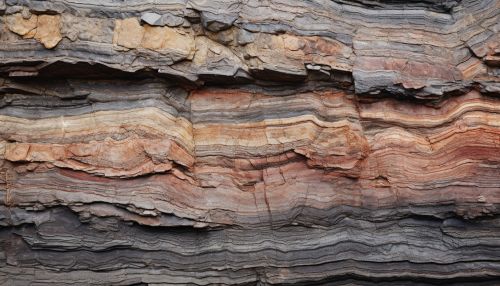Sequence Stratigraphy
Introduction
Sequence stratigraphy is a branch of geological science that deals with the interpretation of sedimentary deposit sequences. It attempts to link sedimentary package relationships with changes in global sea level, sediment supply, and tectonic activity. The main goal of sequence stratigraphy is to reconstruct the history of sea level changes by interpreting sedimentary cycles.


Concept and Principles
The concept of sequence stratigraphy was first introduced by Peter Vail and his colleagues at Exxon Production Research Company in the late 1970s. The principles of sequence stratigraphy are based on the study of sedimentary responses to changes in relative sea level. This includes the identification of unconformities, which are gaps in the geological record, and their correlative conformities, which are equivalent continuous sections.
Sequence stratigraphy involves the subdivision of the sedimentary basin fill into individual sequence sets, which are packages of genetically related strata bounded by unconformities or their correlative conformities. These sequence sets are further subdivided into systems tracts, which are linked to relative changes in sea level.
Sequence Stratigraphic Models
There are several models in sequence stratigraphy, each with its own set of assumptions and interpretations. The most commonly used models are the Exxon model, the Shell model, the Genetic Stratigraphic Sequence model, and the Sequence Stratigraphic model.
Exxon Model
The Exxon model is based on the concept of depositional sequences, which are relatively conformable successions of genetically related strata bounded by unconformities. This model assumes that eustatic sea level changes are the primary control on the formation of depositional sequences.
Shell Model
The Shell model, also known as the "systems tract model," focuses on the identification of systems tracts within sequences. Systems tracts are defined as packages of genetically related strata formed during a specific stage of relative sea level change.
Genetic Stratigraphic Sequence Model
The Genetic Stratigraphic Sequence model emphasizes the identification of genetically related strata, regardless of their relationship with sea level changes. This model is particularly useful in basins where tectonic activity or sediment supply changes are the primary controls on sedimentation.
Sequence Stratigraphic Model
The Sequence Stratigraphic model is a more recent development that combines elements of the Exxon and Shell models. It emphasizes the identification of sequence boundaries, which are unconformities that separate genetically unrelated strata.
Application of Sequence Stratigraphy
Sequence stratigraphy has a wide range of applications in the field of geology. It is used in the exploration and production of hydrocarbons, in the interpretation of ancient environments, in the prediction of reservoir quality, and in the understanding of regional and global changes in sea level.
In hydrocarbon exploration, sequence stratigraphy is used to predict the location of reservoirs, seals, and source rocks. It is also used to predict the distribution of reservoir quality within a basin.
In paleoenvironmental studies, sequence stratigraphy provides a framework for the interpretation of ancient environments and the reconstruction of paleogeography. It is also used to understand the impact of sea level changes on the distribution of ecosystems and the evolution of life.
